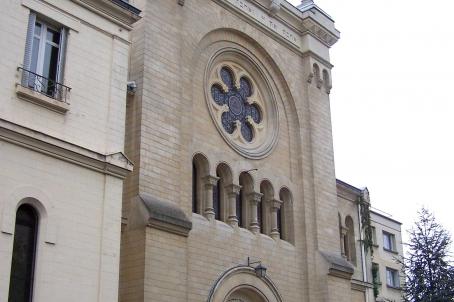Versailles Cathedral
The church was built on the orders of Louis XV who wanted to provide the so-called "Parc aux cerfs" district with a place of worship. A first temporary church was completed in 1727 and then in 1743, the first stone was laid. The construction was carried out under the direction of the architect Jacques Hardouin-Mansart, known as Mansart de Sagonne, grandson of the famous architect of Louis XIV. The building was completed in 1754. Ten years later, the architect J.F. Trouard built a chapel for catechism. It takes the name of the chapel "du Charnier" since it is there that the bodies of the deceased of the castle awaited their funeral. The organs of Clicquot were installed in 1760.



